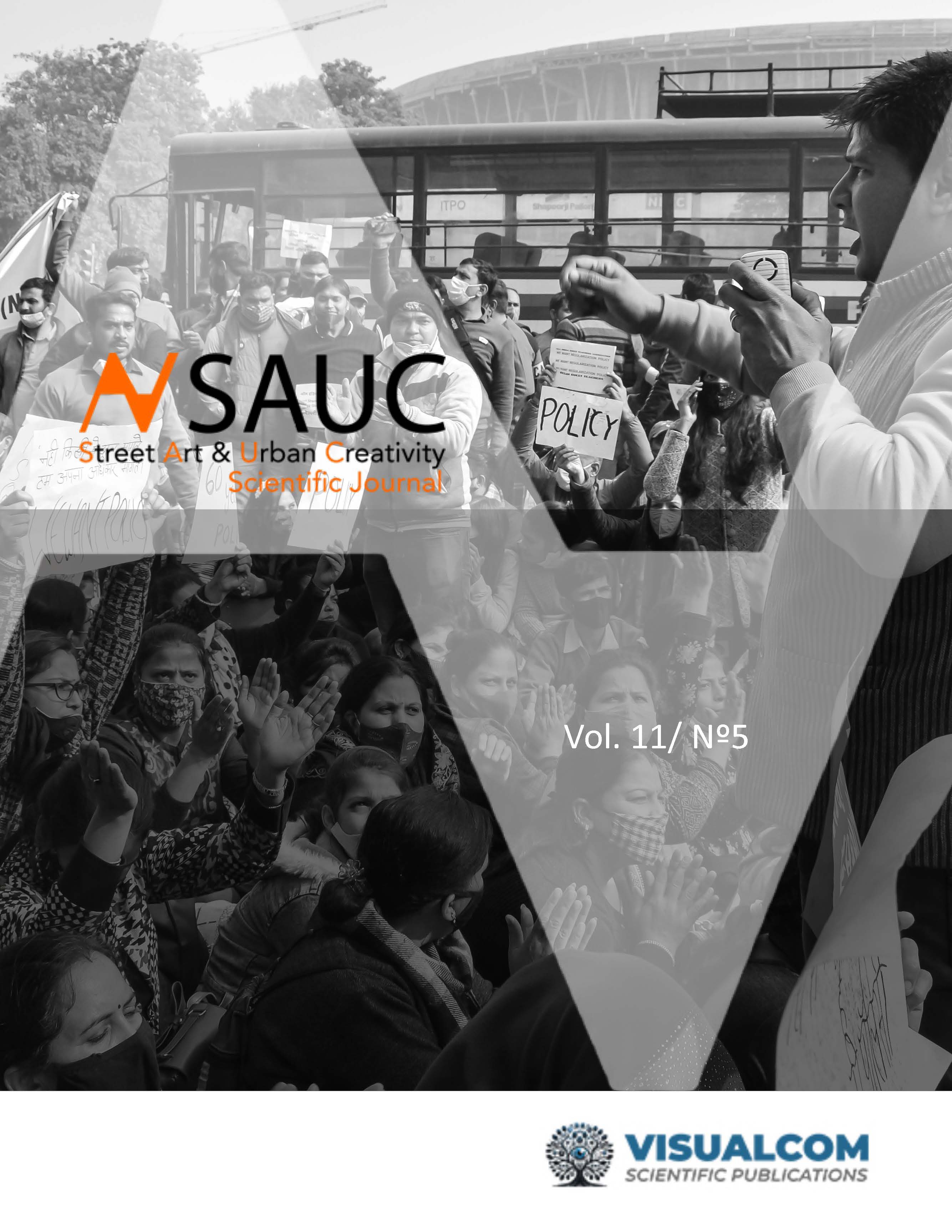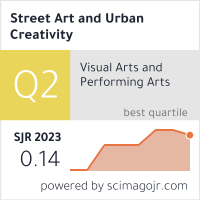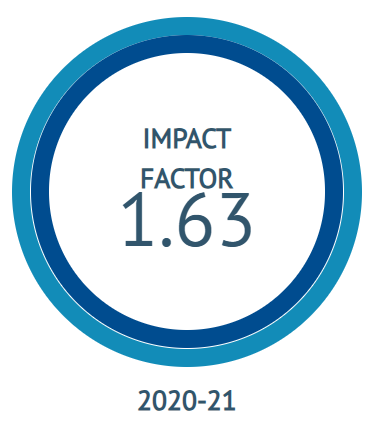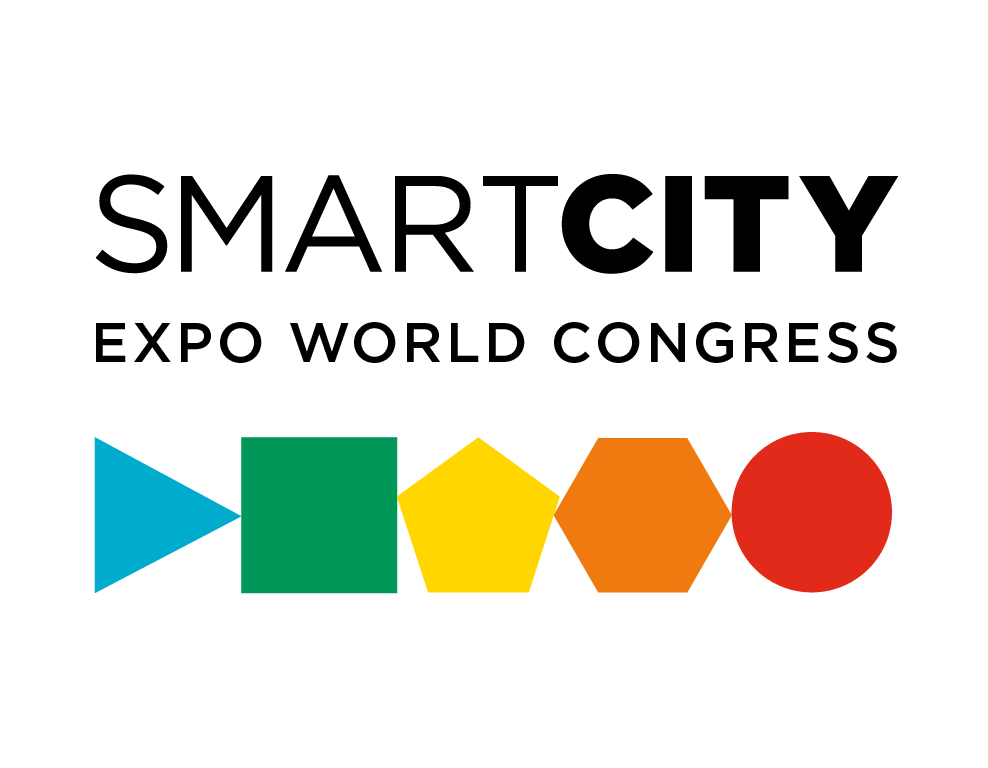Urban art and neighborhood-brand identity
The case of Lavapiés and its representation on Instagram
DOI:
https://doi.org/10.62161/sauc.v11.5642Keywords:
Place branding, Neighborhood branding, Urban art, Urban identity, Instagram, UGC, LavapiesAbstract
This study examines how urban art, through UGC (User Generated Content) on Instagram, contributes to the creation of a neighborhood's place brand identity. Focusing on the Lavapiés neighborhood in Madrid (Spain), a content analysis was conducted on posts tagged with #Lavapiés. The results reveal that urban art is the most frequent theme in the posts, highlighting its primary connection with the gastronomy and the social life of the neighborhood. However, a significant disconnection between urban art and political or civic participation is observed, suggesting an assimilation of this type of art into everyday life, distancing it from its potentially subversive nature. The study concludes with a reflection on the underestimated role of institutions in shaping the place brand.
Downloads
Global Statistics ℹ️
|
406
Views
|
228
Downloads
|
|
634
Total
|
|
References
Acuti, D., Mazzoli, V., Donvito, R., & Chan, P. (2018). An instagram content analysis for city branding in London and Florence. Journal of Global Fashion Marketing, 9(3), 185-204. https://doi.org/10.1080/20932685.2018.1463859
Ana, M.-I., & Istudor, L.-G. (2013). The Role of Social Media and User-Generated-Content in Millennials’ Travel Behavior. Management Dynamics in the Knowledge Economy, 7(1), 87-104. https://doi.org/10.25019/MDKE/7.1.05
Ashworth, G. J. (2009). The Instruments of Place Branding: How is it Done? European Spatial Research and Policy, 16(1), 9-22. https://doi.org/10.2478/v10105-009-0001-9
Ashworth, G., & Kavaratzis, M. (2009). Beyond the logo: Brand management for cities. Journal of Brand Management, 16(8), 520-531. https://doi.org/10.1057/palgrave.bm.2550133
Austin, J. (2010). More to see than a canvas in a white cube: For an art in the streets. City, 14(1-2), 33-47. https://doi.org/10.1080/13604810903529142
Baumann, F., Lopes, M. S., & Lourenço, P. (2018). Destination image through digital photography. Instagram as a data collector for UGC analysis. E-Review of Tourism Research, 9. https://ertr-ojs-tamu.tdl.org/ertr/article/view/117
Blanché, U. (2015). Street Art and related terms. SAUC - Street Art & Urban Creativity Scientific Journal, 1(1), 32-39. https://doi.org/10.25765/SAUC.V1I1.14
Bonfigli, F. (2014). Lavapiés: Seguridad urbana, activismo politico y inmigracion en el corazon de Madrid. Sortuz: Oñati Journal of Emergent Socio-Legal Studies, 6(2), 61-77. https://opo.iisj.net/index.php/sortuz/article/view/547
Chaskin, R. J. (1997). Perspectives on Neighborhood and Community: A Review of the Literature. Social Service Review, 71(4), 521-547. https://doi.org/10.1086/604277
Chaskin, R. J. (1998). Neighborhood as a Unit of Planning and Action: A Heuristic Approach. Journal of Planning Literature, 13(1), 11-30. https://doi.org/10.1177/088541229801300102
Christensen, M., & Thor, T. (2017). The reciprocal city: Performing solidarity—Mediating space through street art and graffiti. International Communication Gazette, 79(6-7), 584-612. https://doi.org/10.1177/1748048517727183
Cócola-Gant, A. (2016). Holiday Rentals: The New Gentrification Battlefront. Sociological Research Online, 21(3), 112-120. https://doi.org/10.5153/sro.4071
Cocola-Gant, A., Hof, A., Smigiel, C., & Yrigoy, I. (2021). Short-term rentals as a new urban frontier – evidence from European cities. Environment and Planning A: Economy and Space, 53(7), 1601-1608. https://doi.org/10.1177/0308518X211042634
Collins, B. (2021). Place Branding and Its Discontents: The Politics and Management of Neighborhood Governance Systems. Journal of Planning Education and Research, 44(2) 0739456X2199844. https://doi.org/10.1177/0739456X21998448
DeGiovanni, F. F. (1983). Patterns of Change in Housing Market Activity in Revitalizing Neighborhoods. Journal of the American Planning Association, 49(1), 22-39. https://doi.org/10.1080/01944368308976193
DeGiovanni, F. F., & Paulson, N. A. (1984). Household Diversity in Revitalizing Neighborhoods. Urban Affairs Quarterly, 20(2), 211-232. https://doi.org/10.1177/004208168402000206
Eshuis, J., & Edelenbos, J. (2009). Branding in urban regeneration. Journal of Urban Regeneration and Renewal, 2(3), 272-282. https://doi.org/10.69554/NUYS8388
Eshuis, J., Klijn, E.-H., & Braun, E. (2014). Place marketing and citizen participation: Branding as strategy to address the emotional dimension of policy making? International Review of Administrative Sciences, 80(1), 151-171. https://doi.org/10.1177/0020852313513872
García, B. (2004). URBAN REGENERATION, ARTS PROGRAMMING AND MAJOR EVENTS: Glasgow 1990, Sydney 2000 and Barcelona 2004. International Journal of Cultural Policy, 10(1), 103-118. https://doi.org/10.1080/1028663042000212355
Gilboa, S., Jaffe, E. D., Vianelli, D., Pastore, A., & Herstein, R. (2015). A summated rating scale for measuring city image. Cities, 44, 50-59. https://doi.org/10.1016/j.cities.2015.01.002
Gon, M. (2021). Local experiences on Instagram: Social media data as source of evidence for experience design. Journal of Destination Marketing & Management, 19, 100435. https://doi.org/10.1016/j.jdmm.2020.100435
González-Díez, L., & Bengoa, M. T. (2018). La intervención artística en el espacio urbano: Acción y reflexión de “Muros Tabacalera". Arquetipo, 17, 49-61.
Grodach, C. (2011). Art Spaces in Community and Economic Development: Connections to Neighborhoods, Artists, and the Cultural Economy. Journal of Planning Education and Research, 31(1), 74-85. https://doi.org/10.1177/0739456X10391668
Hanna, S., & Rowley, J. (2008). An analysis of terminology use in place branding. Place Branding and Public Diplomacy, 4(1), 61-75. https://doi.org/10.1057/palgrave.pb.6000084
Hannerz, E. (2016). Scrolling down the line. SAUC - Street Art and Urban Creativity, 2(2). https://doi.org/10.25765/sauc.v2i2.50
Hochman, N., & Manovich, L. (2013). Zooming into an Instagram City: Reading the local through social media. First Monday, 18(7). https://doi.org/10.5210/fm.v18i7.4711
Hudson, J. R. (1980). Revitalization of Inner-City Neighborhoods: An Ecological Approach. Urban Affairs Quarterly, 15(4), 397-408. https://doi.org/10.1177/107808748001500403
Hwang, K. H. (2014). Finding Urban Identity through Culture-led Urban Regeneration. Journal of Urban Management, 3(1-2), 67-85. https://doi.org/10.1016/S2226-5856(18)30084-0
Kádár, B., & Klaniczay, J. (2022). Branding Built Heritage through Cultural Urban Festivals: An Instagram Analysis Related to Sustainable Co-Creation, in Budapest. Sustainability, 14(9). https://doi.org/10.3390/su14095020
Kusumowidagdo, A., Ujang, N., Rahadiyanti, M., & Ramli, N. A. (2022). Exploring the sense of place of traditional shopping streets through Instagram’s visual images and narratives. Open House International, 48(1), 2-22. https://doi.org/10.1108/OHI-01-2022-0009
Lemoine-Rodríguez, R., Inostroza, L., & Zepp, H. (2020). The global homogenization of urban form. An assessment of 194 cities across time. Landscape and Urban Planning, 204, 103949. https://doi.org/10.1016/j.landurbplan.2020.103949
Luque Rodrigo, L., & Moral Ruiz, C. (2022). The complex task of cataloguing street and public art. CAP - Public Art Journal, 3(1), 36-49. https://doi.org/10.48619/CAP.V3I1.468
Luque-Rodrigo, L. (2020). La gestión del arte urbano, ¿una cuestión pendiente? La Colmena, 81. https://doi.org/10.36677/lacolmena.v0i106.13191
Martin, J. A., & Pentel, P. R. (2002). What the Neighbors Want: The Neighborhood Revitalization Program’s First Decade. Journal of the American Planning Association, 68(4), 435-449. https://doi.org/10.1080/01944360208976284
Masuda, J. R., & Bookman, S. (2018). Neighbourhood branding and the right to the city. Progress in Human Geography, 42(2), 165-182. https://doi.org/10.1177/0309132516671822
Meléndez Táboas, A. (2013). Ilustradores de pared en Madrid. Arte y Ciudad: Revista de Investigación, 3(1), 569-586.
Miles, M. (1995). Art and urban regeneration. Urban History, 22(2), 238-252. https://doi.org/10.1017/S096392680000050X
Narangajavana, Y., Callarisa Fiol, L. J., Moliner Tena, M. Á., Rodríguez Artola, R. M., & Sánchez García, J. (2017). The influence of social media in creating expectations. An empirical study for a tourist destination. Annals of Tourism Research, 65, 60-70. https://doi.org/10.1016/j.annals.2017.05.002
Nomeikaite, L. (2017). Street art, heritage and embodiment. SAUC - Street Art and Urban Creativity, 3(1), 43-53. https://doi.org/10.25765/sauc.v3i1.62
Nur’afifah, O., & Prihantoro, E. (2021). The Influence of Social Media on Millennial Generation about Travel Decision-Making. Jurnal The Messenger, 13(3). https://doi.org/10.26623/themessenger.v13i3.2328
Piñuel, J. L. (2002). Epistemología, metodología y técnicas del análisis de contenido. Estudios de Sociolingüística, 3(1), 1-42.
Rabii, W. (2023). Global Appeal: Colorblindness, Neoliberalism, and Neighborhood Branding. Critical Sociology, 49(7-8), 1211-1230. https://doi.org/10.1177/08969205221146268
Rius Ulldemolins, J. (2014). Culture and authenticity in urban regeneration processes: Place branding in central Barcelona. Urban Studies, 51(14), 3026-3045. https://doi.org/10.1177/0042098013515762
Sadeque, S., Roy, S. K., Swapan, M. S. H., Chen, C.-H., & Ashikuzzaman, M. (2020). An integrated model of city and neighborhood identities: A tale of two cities. Journal of Business Research, 117, 780-790. https://doi.org/10.1016/j.jbusres.2019.06.040
Santos, M. L. B. dos. (2021). The “so-called” UGC: An updated definition of user-generated content in the age of social media. Online Information Review, 46(1), 95-113. https://doi.org/10.1108/OIR-06-2020-0258
Schivinski, B., & Dabrowski, D. (2016). The effect of social media communication on consumer perceptions of brands. Journal of Marketing Communications, 22(2), 189-214. https://doi.org/10.1080/13527266.2013.871323
Sierra, R. (2001). Técnicas de investigación social: teoría y ejercicios (14a. ed.). Paraninfo : Thomson Learning.
Skinner, H. (2018). Who really creates the place brand? Considering the role of user generated content in creating and communicating a place identity. Communication & Society, 31(4), 9-25. https://doi.org/10.15581/003.31.4.9-24
Stern, M. J., & Seifert, S. C. (2010). Cultural Clusters: The Implications of Cultural Assets Agglomeration for Neighborhood Revitalization. Journal of Planning Education and Research, 29(3), 262-279. https://doi.org/10.1177/0739456X09358555
Sukiman, M. A. (2023). Exploring the impact of user- generated content on place branding: A study of UNESCO World Heritage Sites in Malaysia on Instagram.
Sutton, S. A. (2010). Rethinking Commercial Revitalization: A Neighborhood Small Business Perspective. Economic Development Quarterly, 24(4), 352-371. https://doi.org/10.1177/0891242410370679
Terttunen, A. (2017). The influence of Instagram on consumers’ travel planning and destination choice [fi=AMK-opinnäytetyö|sv=YH-examensarbete|en=Bachelor’s thesis|]. Haaga-Helia ammattikorkeakoulu. http://www.theseus.fi/handle/10024/129932
Thelander, Å., & Cassinger, C. (2017). Brand New Images? Implications of Instagram Photography for Place Branding. Media and Communication, 5(4), 6-14. https://doi.org/10.17645/mac.v5i4.1053
Urquia, I. (2025). Identidad y branding de barrio: retos y tendencias para la marca-lugar. Revista Mediterránea de Comunicación, 16(2), e28430. https://doi.org/10.14198/MEDCOM.28430
Van Ham, P. (2008). Place Branding: The State of the Art. The ANNALS of the American Academy of Political and Social Science, 616(1), 126-149. https://doi.org/10.1177/0002716207312274
Vázquez, M. G., Martín, M. C., Vázquez, M. G., & Martín, M. C. (2017). La ciudad como soporte: El auge de los festivales de arte urbano en España. VIII Congreso Internacional sobre la Imagen y la Red de Investigacion sobre la Imagen = Eighth International Conference on The Image : Venice International University, 31 October - 1 November. VIII Congreso Internacional sobre la Imagen y la Red de Investigacion sobre la Imagen = Eighth International Conference on The Image : Venice International University, 31 October - 1 November. https://produccioncientifica.ucm.es/documentos/63b5f6637109c1657f644861
Wachsmuth, D., & Weisler, A. (2018). Airbnb and the rent gap: Gentrification through the sharing economy. Environment and Planning A: Economy and Space, 50(6), 1147-1170. https://doi.org/10.1177/0308518X18778038
Wacker, A., & Groth, A. (2020). Projected and Perceived Destination Image of Tyrol on Instagram. En J. Neidhardt & W. Wörndl (Eds.), Information and Communication Technologies in Tourism 2020 (pp. 103-114). Springer International Publishing. https://doi.org/10.1007/978-3-030-36737-4_9
Whybrow, N. (2011). Art and the City. I.B.Tauris. https://doi.org/10.5040/9780755604081
Willer, C. J. (2022). Rebranding place “to build community”: Neighborhood branding in Buffalo, NY. Urban Geography, 43(9), 1350-1371. https://doi.org/10.1080/02723638.2021.1927323
Zhou, L., & Xue, F. (2022). Effects of Instagram User-Generated Content on Travel Inspiration and Planning: An Extended Model of Technology Acceptance. Journal of Promotion Management, 28(3), 239-260. https://doi.org/10.1080/10496491.2021.1989537
Downloads
Published
How to Cite
Issue
Section
License
Copyright (c) 2025 Authors retain copyright and transfer to the journal the right of first publication and publishing rights

This work is licensed under a Creative Commons Attribution-NoDerivatives 4.0 International License.
Those authors who publish in this journal accept the following terms:
-
Authors retain copyright.
-
Authors transfer to the journal the right of first publication. The journal also owns the publishing rights.
-
All published contents are governed by an Attribution-NoDerivatives 4.0 International License.
Access the informative version and legal text of the license. By virtue of this, third parties are allowed to use what is published as long as they mention the authorship of the work and the first publication in this journal. If you transform the material, you may not distribute the modified work. -
Authors may make other independent and additional contractual arrangements for non-exclusive distribution of the version of the article published in this journal (e.g., inclusion in an institutional repository or publication in a book) as long as they clearly indicate that the work was first published in this journal.
- Authors are allowed and recommended to publish their work on the Internet (for example on institutional and personal websites), following the publication of, and referencing the journal, as this could lead to constructive exchanges and a more extensive and quick circulation of published works (see The Effect of Open Access).













